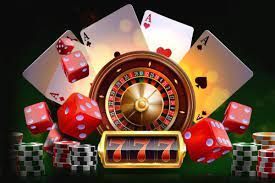Slot machines, often referred to simply as “slot88,” are one of the most iconic and widely recognized forms of entertainment in the gambling industry. From the clinking sounds of spinning reels in traditional brick-and-mortar casinos to the convenience of online slot games, these games have captured the imaginations of millions around the world. But what makes them so enduringly popular, and how have they evolved over time? In this article, we’ll delve into the rich history, technological advancements, and thrilling appeal of slot machines.
A Brief History of Slot Machines
The story of the slot machine begins in the late 19th century. The first mechanical slot machine, known as the “Liberty Bell,” was invented in 1895 by Charles Fey, a mechanic from San Francisco. This machine featured three reels and five symbols: horseshoes, diamonds, spades, hearts, and a Liberty Bell. The concept was simple yet captivating—players would insert a coin, pull a lever, and wait for the reels to stop spinning. If the symbols aligned in a particular combination, the player would win a payout.
The popularity of the Liberty Bell and subsequent slot machines grew rapidly, leading to the development of more sophisticated designs. By the early 1900s, slot machines became a fixture in bars, restaurants, and gambling halls. However, it wasn’t until the mid-20th century that the concept of slot machines truly exploded into mainstream culture, thanks in part to the development of electromechanical machines. These innovations allowed for a broader range of game features, such as larger jackpots and multiple paylines.
The Rise of Video Slots
As technology advanced, so did the design of slot machines. The 1970s saw the advent of video slot machines, which replaced the mechanical reels with a video screen. Video slots not only offered a more visually appealing experience but also allowed for a wider range of game features, including multiple paylines, bonus rounds, and interactive elements. This was a turning point for the slot industry, as it marked the transition from traditional mechanical machines to the digital world.
In the 1990s, with the advent of the internet and the growth of online casinos, video slots found a new platform to thrive on. Online casinos allowed players to access their favorite slot games from the comfort of their homes, with more elaborate themes, creative animations, and exciting features. Slots like “Mega Moolah” and “Gonzo’s Quest” captured the imagination of players worldwide, offering larger jackpots and more immersive experiences.
The Mechanics of Modern Slot Machines
At the heart of every slot machine lies its Random Number Generator (RNG), a computer algorithm designed to ensure that the outcomes of each spin are entirely random and fair. The RNG generates thousands of numbers per second, and each number corresponds to a specific combination of symbols on the reels. When the player presses the spin button, the RNG determines the result based on the number generated at that moment. This randomness is what makes slot machines thrilling and unpredictable—there is no way to predict the outcome of a spin.
Modern slot machines also feature a wide array of paylines, which refer to the possible ways in which symbols can align to form winning combinations. In traditional slots, there might be just one payline—the line that runs horizontally across the middle of the reels. However, today’s video slots often feature dozens, hundreds, or even thousands of paylines, with some machines offering “ways to win” systems that allow for more flexible symbol combinations.
Themes and Innovation in Slot Games
One of the most exciting aspects of slot machines is the variety of themes that are available. Whether it’s an adventure game set in ancient Egypt, a space exploration game, or a nostalgic classic featuring fruits and sevens, there’s a slot machine for everyone. Game developers use themes to engage players and create an immersive experience. In addition to creative graphics and animations, sound design plays a crucial role in enhancing the atmosphere of a game, with dynamic music and exciting sound effects accompanying every spin.
Some of the most popular themes in modern slots include:
- Mythology and Legends: Greek gods, Norse mythology, and ancient civilizations.
- Adventure and Exploration: Deep-sea treasure hunts, jungle expeditions, and space travel.
- Pop Culture and Movies: Licensed slot games based on films, television series, and celebrities.
- Classic Fruit Machines: The traditional style of slots with symbols like cherries, lemons, and bars.
Along with the engaging themes, many modern slot games incorporate bonus rounds, free spins, and progressive jackpots. Progressive slots are especially attractive, as the jackpot increases every time someone plays the game but doesn’t win the big prize. This means that the jackpot can grow to life-changing sums before it is finally claimed by a lucky player.
Online Slots: Convenience and Accessibility
The rise of online casinos has made slot machines more accessible than ever before. Players no longer need to travel to a land-based casino to enjoy their favorite games. Online casinos provide a vast selection of slots, from classic fruit machines to modern video slots, all available with just a few clicks.
Moreover, online casinos often feature “free-to-play” versions of their slot games, allowing players to try out different machines without risking real money. This is a great way for beginners to familiarize themselves with the mechanics of slots and for experienced players to experiment with new games.
Mobile gaming has also played a pivotal role in the rise of online slots. With the proliferation of smartphones and tablets, players can now access their favorite slots on the go, anytime and anywhere. Many developers have optimized their games for mobile devices, ensuring that the gameplay remains smooth and enjoyable on smaller screens.
The Psychology Behind Slot Machines
The appeal of slot machines goes beyond their flashy visuals and enticing jackpots. Psychologically, these games are designed to keep players engaged and entertained. One of the key factors behind the popularity of slots is the concept of intermittent reinforcement. When players spin the reels, they receive random rewards—sometimes a small win, other times a larger payout. This unpredictability keeps players coming back for more, as the excitement of not knowing when a big win will happen creates a sense of anticipation and thrill.
The sensory experience of playing slots—bright lights, catchy music, and engaging animations—also plays a role in creating a fun and immersive atmosphere. Many players enjoy the simplicity of the game, as it requires no skill or strategy, and can be enjoyed purely for entertainment.
Responsible Gaming and Slot Machines
While slot machines offer exciting opportunities for entertainment, it’s essential for players to approach them with caution. The ease of playing, combined with the potential for large payouts, can lead some players to spend more money than they intend. Responsible gaming practices are vital to ensuring that gambling remains a fun and enjoyable activity. Setting limits on how much time and money to spend on slots, as well as recognizing the signs of problematic gambling behavior, are key steps toward enjoying these games responsibly.
Conclusion
Slot machines have come a long way since the days of the Liberty Bell. From their humble mechanical beginnings to the digital and online experiences we see today, slots continue to evolve and captivate players worldwide. With their exciting themes, innovative features, and the thrill of unpredictability, slot machines are sure to remain a staple of the gambling world for years to come. Whether you’re playing for fun or chasing that elusive jackpot, the world of slots offers something for everyone.


